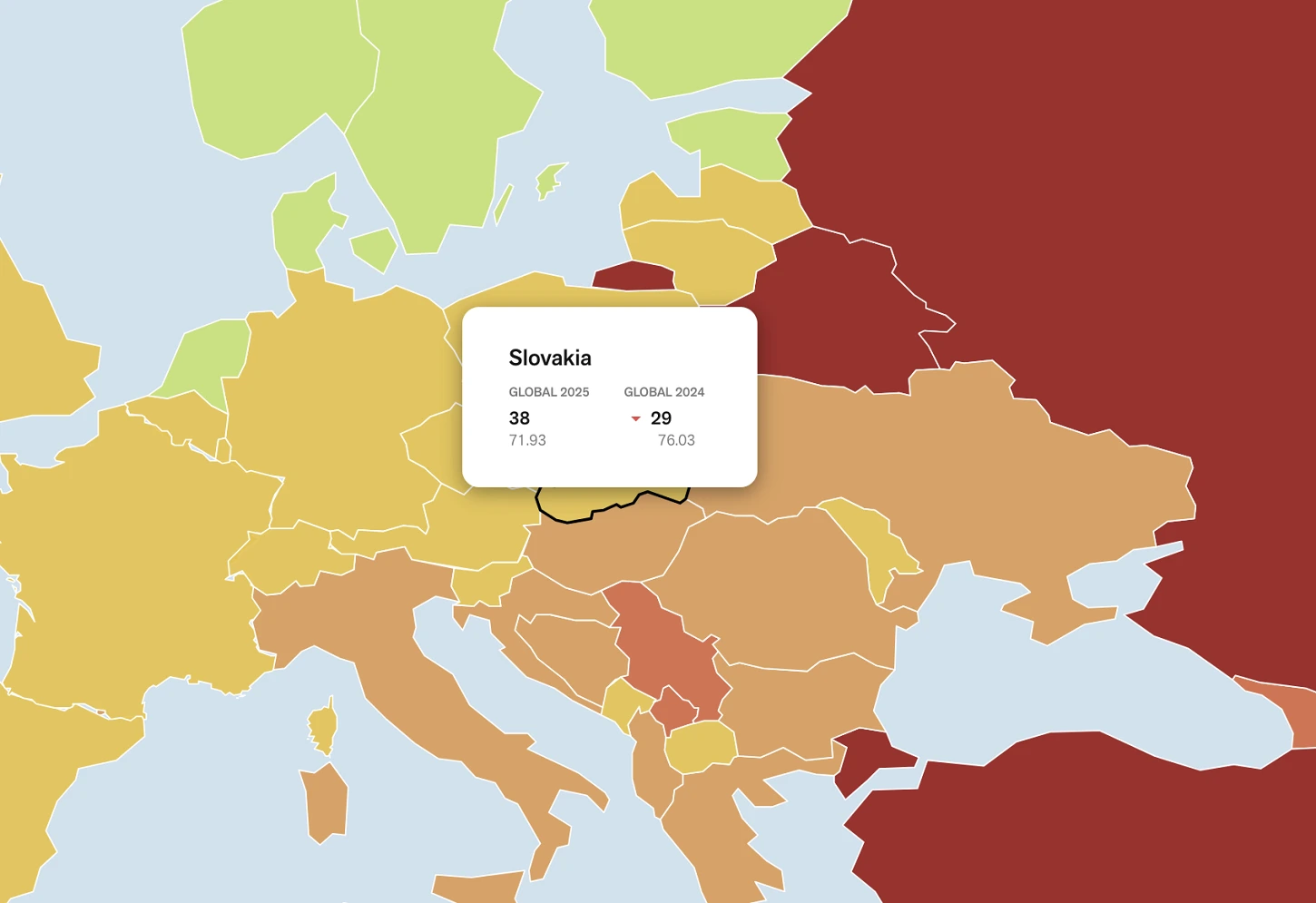
6 minutes
[Press Freedom Index 2025] SLOVAKIA IS FALLING
World Press Freedom Day (3 May)
RSF in its assessment downgraded Slovakia from 29th to 38th. Since the 2023 parliamentary elections, the Robert Fico's government has been deliberately creating a hostile environment for independent journalism. In addition, the instigator of the 2018 murder of Ján Kuciak and his fianceé has yet to be convicted.
#WORLD PRESS FREEDOM
Reporters Without Borders (RSF), at the occasion of the World Press Freedom Day, issued its annual assessment of the world media freedom - it identifies economic fragility as a leading threat to press freedom.
For over ten years, the Index’s results have warned of a worldwide decline in press freedom. More than six out of ten countries (112 in total, out of 180 in total) saw their overall scores decline in the Index. In 2025, a new low point emerged: the average score of all assessed countries fell below 55 points, falling into the category of a “difficult situation.” As a result, the global state of press freedom is now classified as a “difficult situation” for the first time in the history of the Index.
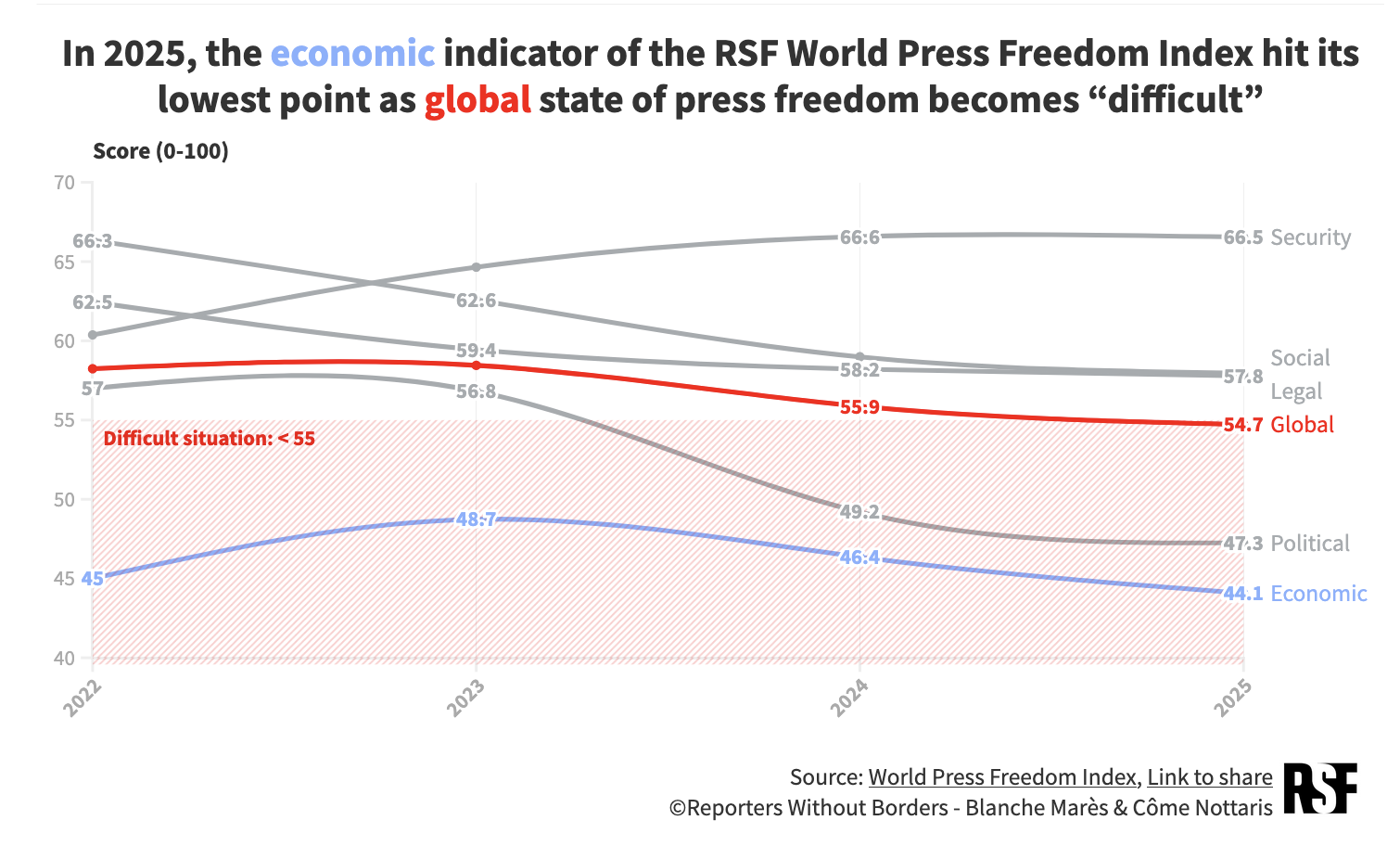
The 2025 World Press Freedom Index by Reporters Without Borders (RSF) found that more than half of the world's population lives in a country where press freedom is in a “very serious” situation — that’s 4.25 billion people in 42 countries now marked bright red on the Index’s map.
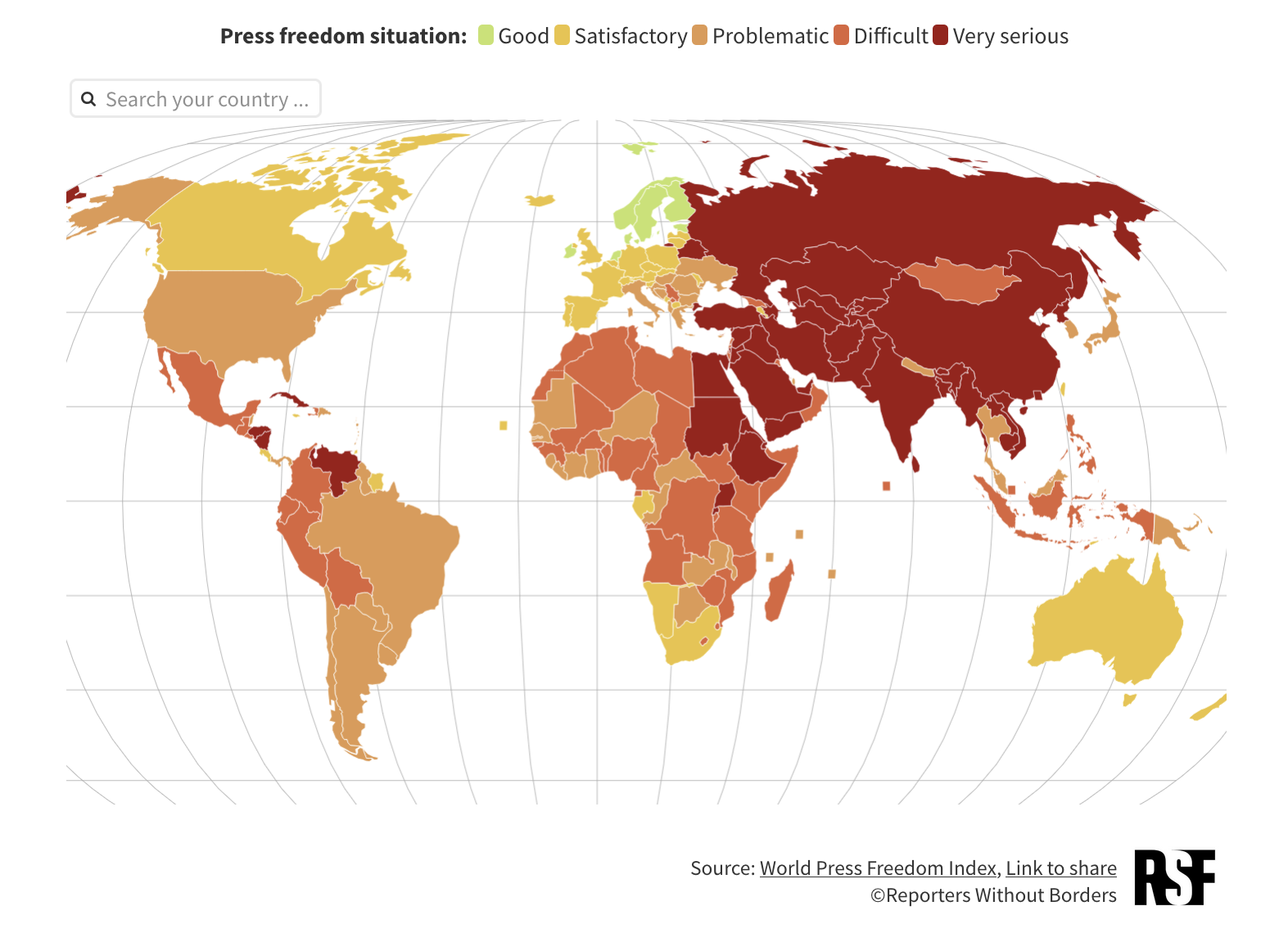
Although physical attacks against journalists are the most visible violations of press freedom, economic pressure is also a major, more insidious problem. The economic indicator on the RSF World Press Freedom Index now stands at an unprecedented, critical low as its decline continued in 2025. Here is the Index and its Methodology.
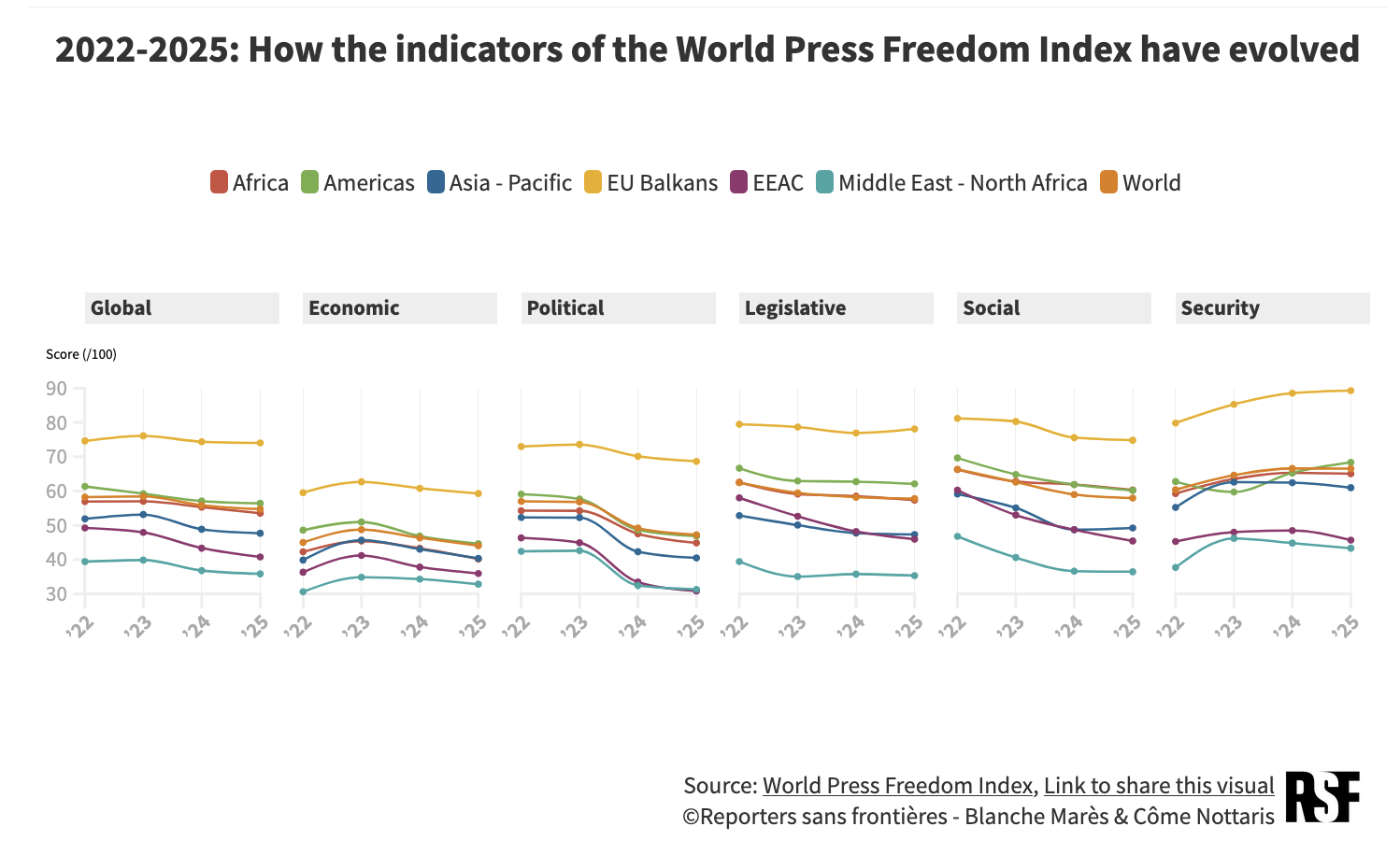
For the first time in the history of the Index, the conditions for practising journalism are “difficult” or “very serious” in over half of the world’s countries and satisfactory in fewer than one in four.
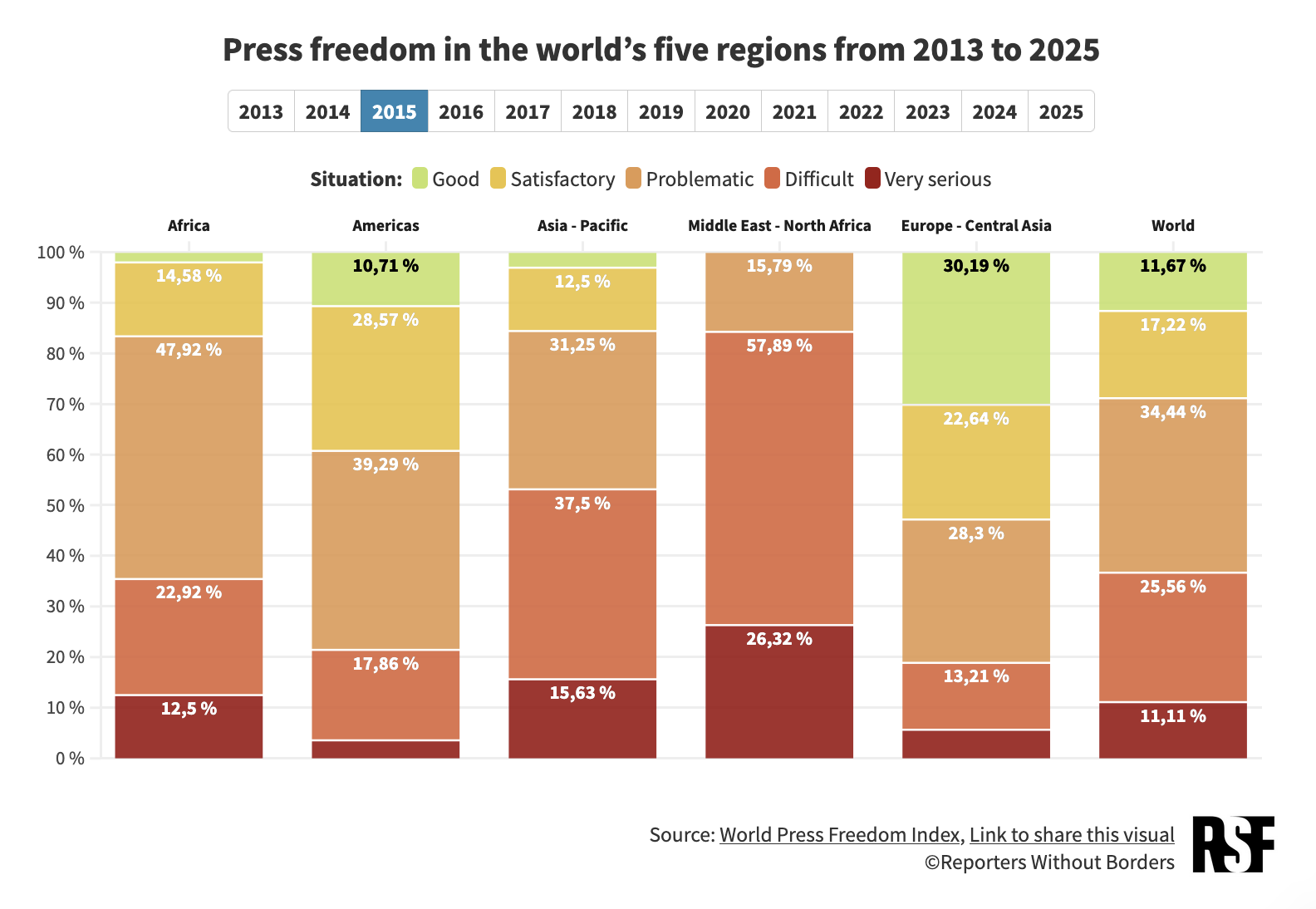


#Region file: Europe
The media’s economic crisis is also palpable within the European Union (EU) and the Balkans, where the implementation of the European Media Freedom Act (EMFA) – which could benefit the news economy – is still pending. The funding of public broadcasting has become a decisive test of how countries support their media landscape: Czechia (10th) has chosen to strengthen the sustainability of its public media budget, unlike Germany (11th) and France (25th). In Slovakia (38th), Bosnia and Herzegovina (86th), Serbia (96th) and Kosovo (99th) – the Index’s worst-ranking country in the EU-Balkans area– public service media are experiencing an existential crisis due to budget cuts and political control.
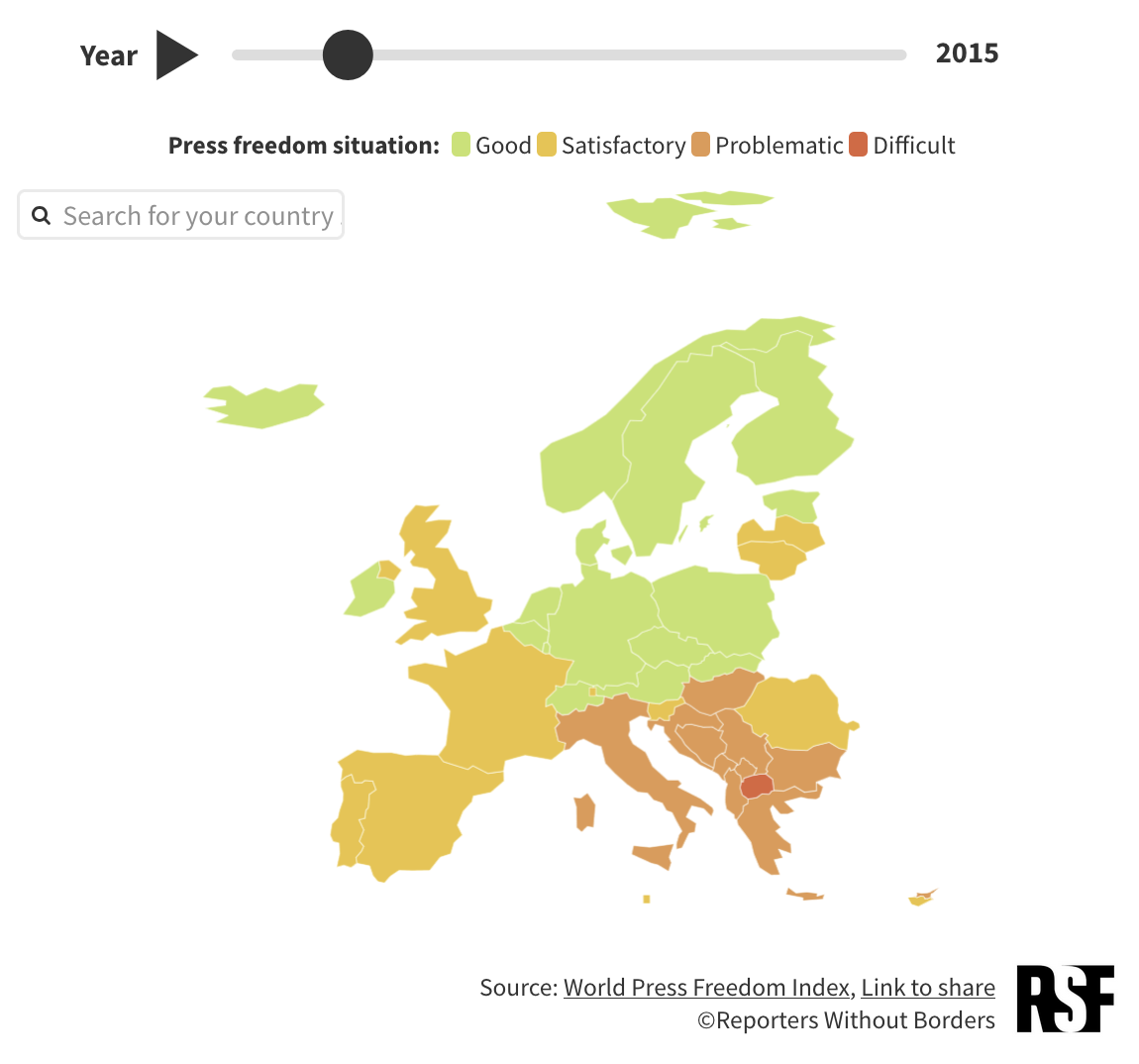
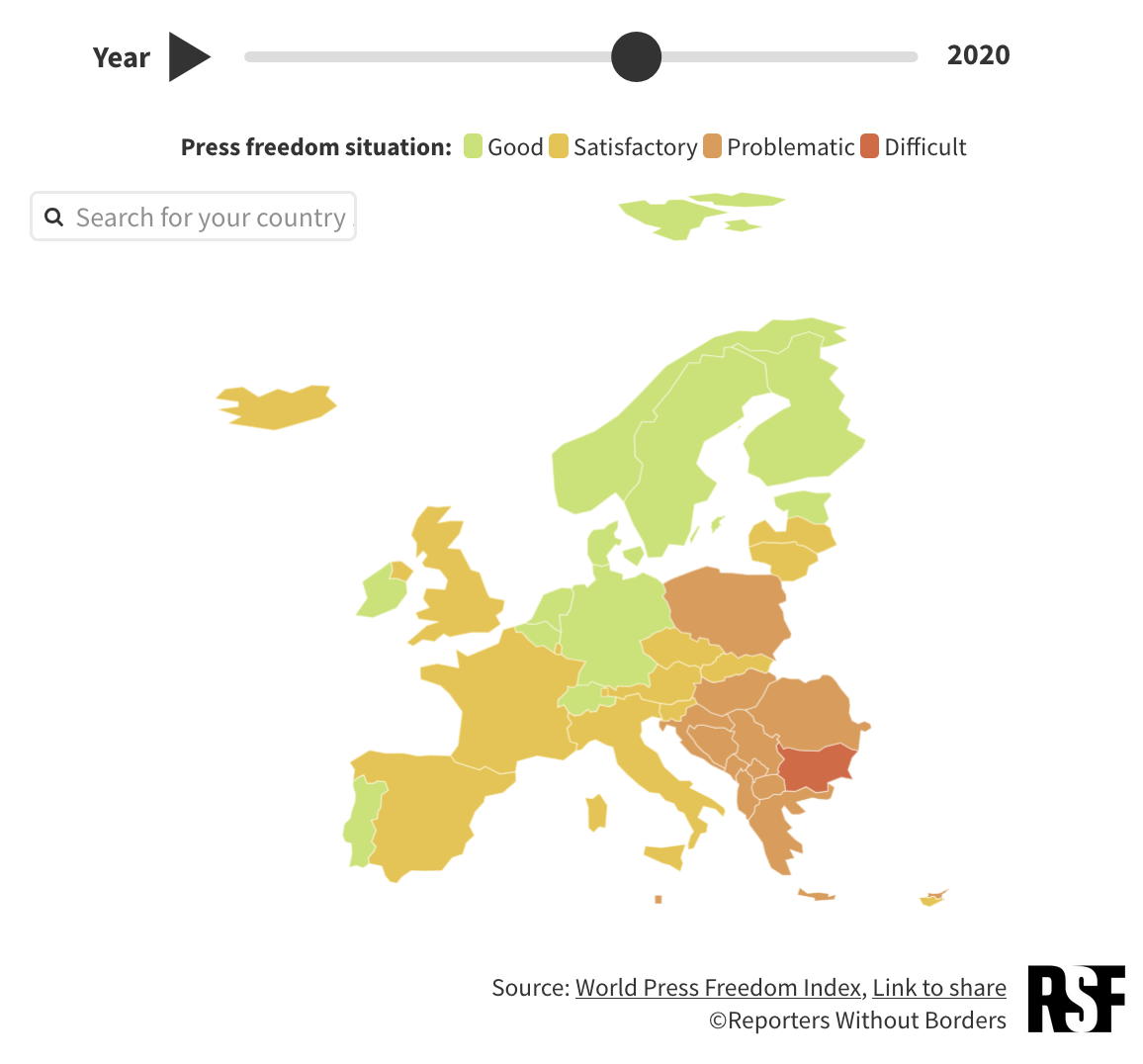
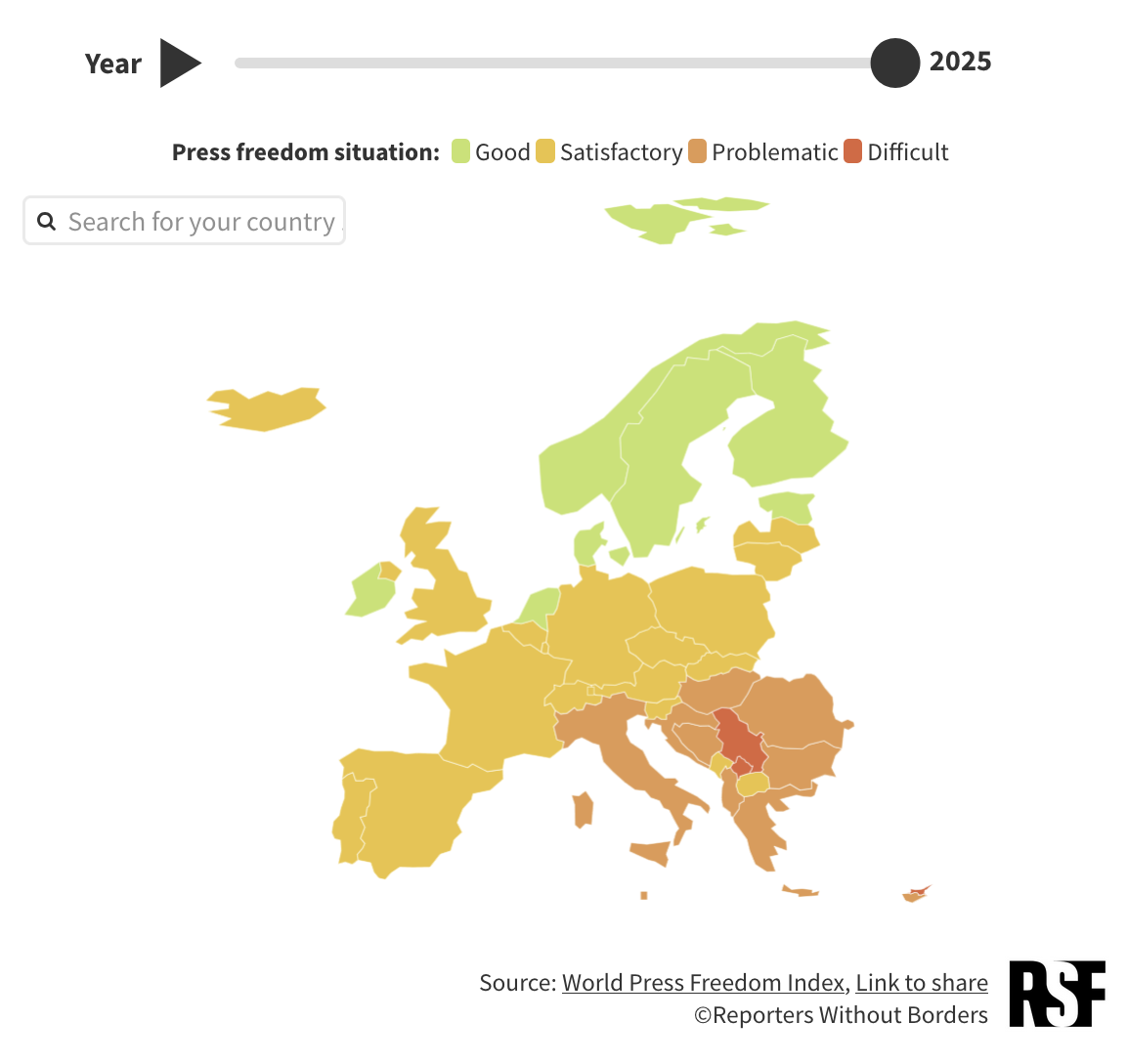
#Country file: SLOVAKIA
Since the 2023 parliamentary elections brought Prime Minister Robert Fico back to power, the government has been deliberately creating a hostile environment for independent journalism in the country, which is threatened by political and economic interests in both public and private outlets. What’s more, the instigator of the 2018 murder of Jan Kuciak and his partner has yet to be convicted.
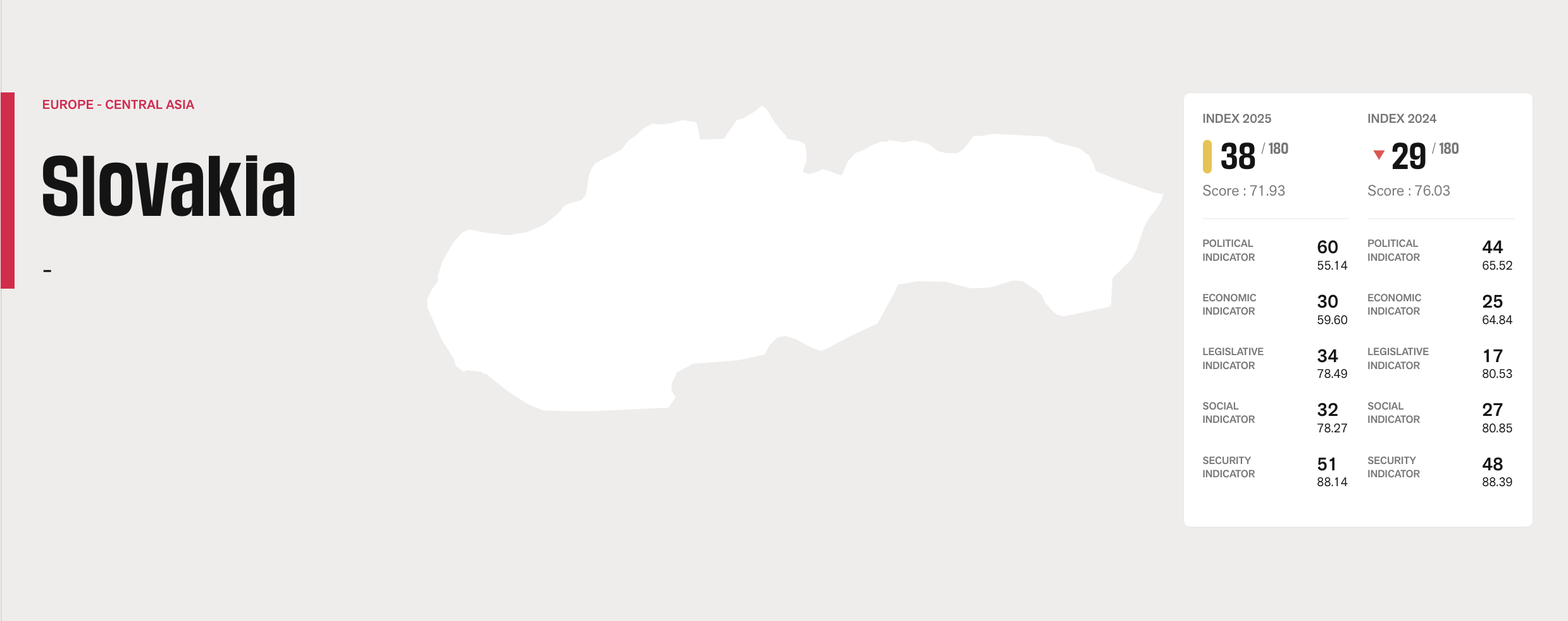
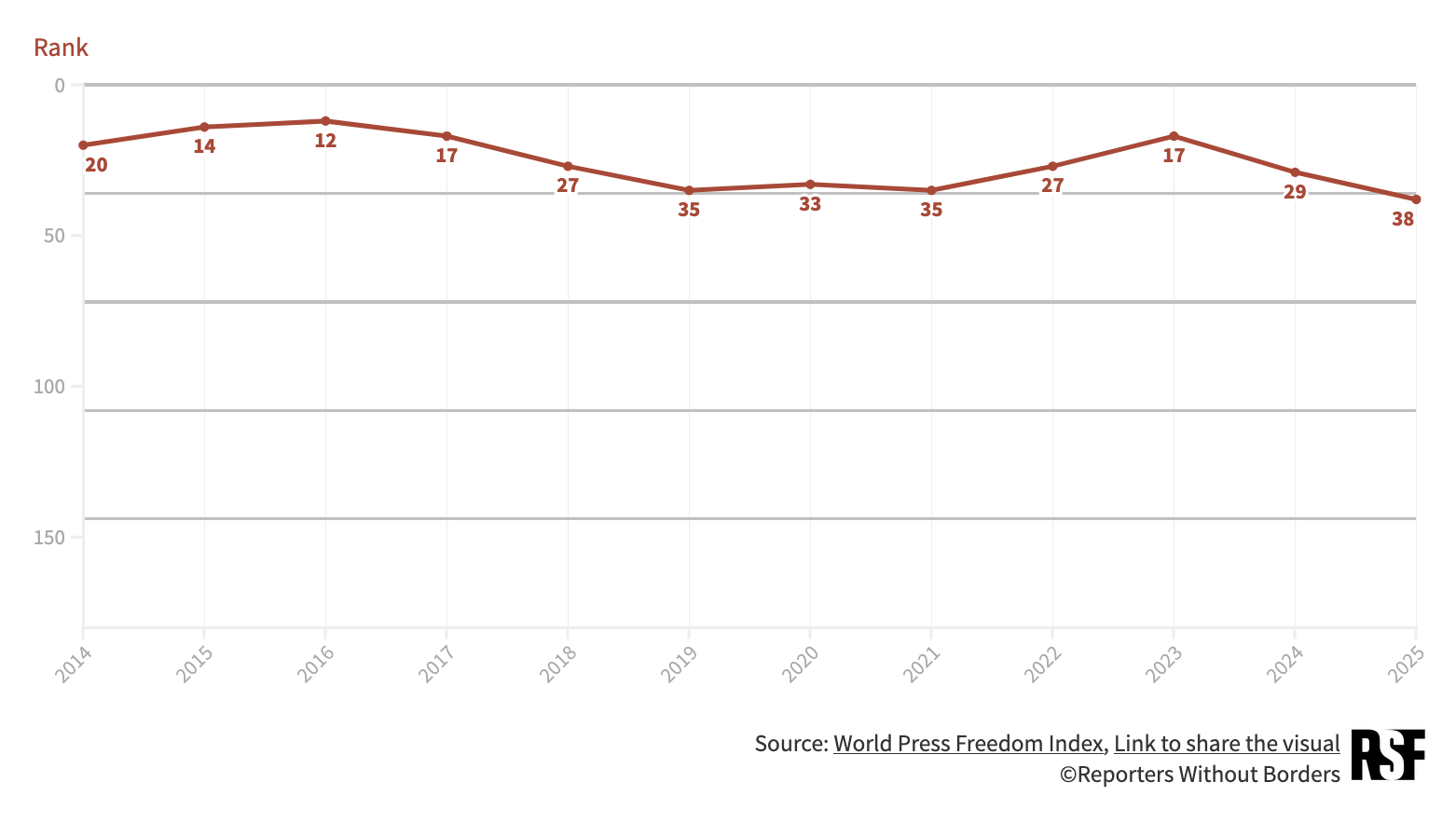
#Media landscape
The most influential privately-owned media outlet, TV Markíza, is subjected to political pressure. Public broadcaster RTVS has been replaced with a new entity, STVR, and the government has openly stated its intention to change the outlet’s management and editorial line. After acquiring the Novy cas newspaper, the oligarchic Penta group now owns Slovakia’s two biggest tabloid newspapers. Despite these challenges, the country has a strong tradition of investigative journalism, which appears in several newspapers and online media outlets.
#Political context
Since the 2023 parliamentary elections brought back Prime Minister Robert Fico — who was in power when journalist Jan Kuciak was murdered — the government has been deliberately creating a hostile environment for journalism. The ruling coalition’s representatives attack critical media, refuse to answer their questions and file abusive lawsuits (SLAPPs) against them.
#Legal framework
Press freedom benefits from a favourable legal framework when it comes to the confidentiality of journalistic sources and transparency of media ownership and funding. However, defamation is still punishable by imprisonment. Moreover, the government has restricted access to public information and the independence of the country’s public media — and has pledged to instate further legislation undermining media freedom.
#Economic context
Various factors undermine the mainstream media’s editorial independence. A small group of oligarchs owns several major outlets while the public broadcaster STVR’s funding remains vulnerable to political influence. A number of smaller privately owned media outlets are growing thanks to the support of their audience and the digital subscription model. Nonetheless, the limited size of this market and the rise of digital platforms hamper the funding of quality news reporting.
#Sociocultural context
While Slovak society is largely conservative, the media are, for the most part, liberal-leaning, which causes tension. Journalists, especially women, are criticised and sometimes attacked online for covering gender-related issues or sexual harassment. Encouraged by the verbal attacks of some politicians, members of the public have insulted or harassed journalists during protests and on social media.
#Safety
The murder of investigative reporter Jan Kuciak and his fiancée Martina Kusnirova in 2018 was a tragic turning point. Although two of the perpetrators and two intermediaries have been convicted, the alleged instigator, businessman Marian Kocner, was acquitted twice. In 2023, two new press freedom platforms were launched with RSF support, one by civil society and the other by the state, but their work has been undermined by Fico’s government.